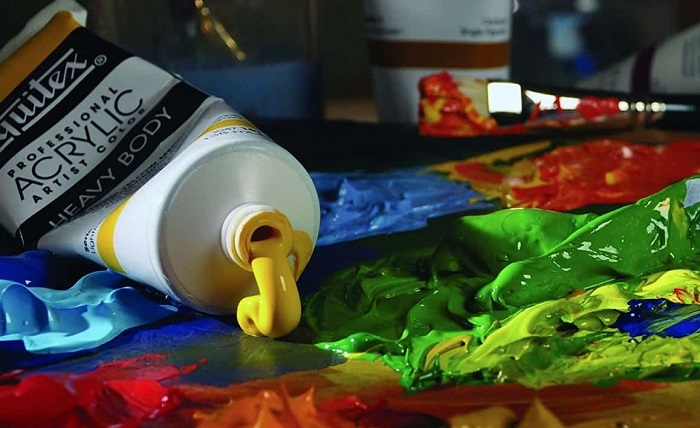Explore the Bright World of Acrylic Colours: Your Unrestricted Creative Handbook

The adaptable darlings of the art world are acrylic colours. Acrylics provide a colourful creative playground for all skill levels, from seasoned pros to inquisitive beginners. They are the ideal media for exploration, experimentation, and realising your artistic vision because of their quick drying time, ease of use with water, and limitless stacking possibilities.
But where do you start when there’s so much to learn? This in-depth manual explores the intriguing world of acrylics and provides you with the information and motivation you need to discover your inner artist.
Exposing the Spectrum of Acrylic:
Acrylic Colour Types:
Fluid acrylics are perfect for airbrushing, glazes, and washes because they flow like water.
Thick and buttery, heavy body acrylics are ideal for impasto (textured) paintings and strong brushstrokes.
Soft Body Acrylics: A combination of thickness and fluidity that work well with a range of techniques.
Acrylics that are iridescent: They shimmer and have pearlescent or metallic effects.
Acrylic Interference: Use optical mixing to produce striking colour shifts.
Pigment Calibre:
Artist Grade: Brightest, lightfast (fade-resistant), and highest pigment concentration.
Student Grade: More affordable for practice and experimentation, with a lower pigment concentration.
Crucial Equipment and Materials:
Brushes: Filbert, round, flat, synthetic or natural hair, and detail brushes.
Palette: For blending colours, use white ceramic or plastic.
Gesso: Primer for priming materials such as wood or canvas.
Media: Create glazes, alter texture, and prolong the drying period.
Varnishes: Guard your artwork from UV rays and dust.
Blending Your Masterwork:
The primary colours of red, yellow, and blue serve as the basis for creating an endless variety of hues.
Secondary colours are created by combining main colours, such as purple, orange, and green.
Tertiary colours are produced by combining primary and secondary colours; these include brown, black, and white.
A visual aid for comprehending colour harmony and relationships is the colour wheel.
Getting Your Creativity Out:
Layering, glazing, mixing, stippling, impasto, and dry brushing are examples of basic techniques.
Textural Play: To produce textured surfaces, work with mediums, pastes, and gels.
Mix media: Use acrylic paints along with collage supplies, inks, and watercolours.
Stencils and stamps: Embellish your artwork with elaborate patterns and designs.
Examining Potential Projects:
Paintings on canvas: abstract emotions, landscapes, portraits, and more.
Wall art, furniture, and decorative items painted in wood.
T-shirts, tote bags, and various textiles can be painted.
Acrylics can be used with other media to create unique works of art in mixed media art.
How to Take Care of Your Acrylic Works:
Drying Time: Give paintings enough time to fully dry (typically 24 to 48 hours) before applying varnish.
Varnishing: Keep dust and UV rays away from your artwork.
Storage: Keep paintings out of direct sunlight in a cool, dry location.
In summary:
Acrylic colours offer unrestricted exploration, experimentation, and self-expression. This dynamic medium may help you bring your artistic idea to life and unlock your inner creativity, regardless of your level of experience as an artist. Now that you have your brushes and colours mixed, explore the world of acrylic painting—the possibilities are virtually limitless!
FAQ:
What surfaces am I able to paint with acrylics?
Using the right primers, you can use canvas, wood, paper, fabric, metal, and even plastic.
Do acrylics have any harmful properties?
Though most acrylic paints are safe to use, make sure you constantly read the label and provide enough ventilation.
How should acrylic brushes be cleaned?
After each use, give them a quick wash with soap and water.
Can I apply acrylic paint outside? Sure, but use varnishes and acrylics that are resistant against UV rays.




